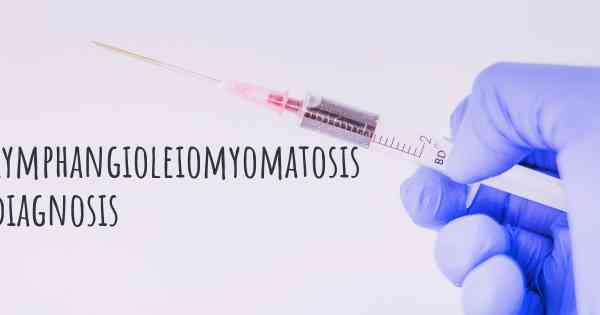How is Lymphangioleiomyomatosis diagnosed?
See how Lymphangioleiomyomatosis is diagnosed. Which specialists are essential to meet, what tests are needed and other useful information for the diagnosis of Lymphangioleiomyomatosis

Lymphangioleiomyomatosis (LAM) is a rare lung disease that primarily affects women of childbearing age. It is characterized by the abnormal growth of smooth muscle cells, called LAM cells, in the lungs, lymphatic system, and other organs. LAM can lead to progressive lung damage, respiratory symptoms, and other complications.
Diagnosing LAM can be challenging due to its rarity and the similarity of its symptoms to other lung diseases. However, there are several key diagnostic methods that healthcare professionals use to identify and confirm LAM:
1. Clinical Evaluation:
The diagnostic process usually begins with a thorough clinical evaluation, including a detailed medical history and physical examination. The healthcare provider will inquire about symptoms such as shortness of breath, cough, chest pain, and recurrent pneumothorax (collapsed lung). They will also assess risk factors, such as a family history of LAM or tuberous sclerosis complex (TSC), a genetic disorder often associated with LAM.
2. Pulmonary Function Tests (PFTs):
Pulmonary function tests are commonly performed to assess lung function and detect any abnormalities. These tests measure lung capacity, airflow, and gas exchange. In LAM, PFTs may reveal a decrease in lung function, particularly a reduction in the forced expiratory volume in one second (FEV1) and the diffusion capacity of the lungs for carbon monoxide (DLCO).
3. High-Resolution Computed Tomography (HRCT) Scan:
An HRCT scan is a specialized imaging technique that provides detailed cross-sectional images of the lungs. It is a crucial tool for diagnosing LAM as it can detect characteristic features such as thin-walled lung cysts, lung nodules, and pleural effusions. The presence of multiple cysts, especially in specific lung regions, can strongly suggest LAM.
4. Blood Tests:
While there is no specific blood test for diagnosing LAM, certain laboratory tests can help rule out other conditions and assess overall health. Blood tests may include a complete blood count (CBC), liver and kidney function tests, and measurement of serum tumor markers like vascular endothelial growth factor-D (VEGF-D). Elevated VEGF-D levels can support the diagnosis of LAM, but they are not exclusive to this condition.
5. Transbronchial Lung Biopsy:
In some cases, a transbronchial lung biopsy may be necessary to confirm the diagnosis of LAM. This procedure involves obtaining a small tissue sample from the lungs using a flexible bronchoscope. The sample is then examined under a microscope to identify the presence of LAM cells. However, lung biopsies are not always required, especially if other diagnostic criteria are met.
6. Genetic Testing:
Genetic testing is recommended for individuals diagnosed with LAM, as well as their family members. It can help identify mutations in the TSC1 or TSC2 genes, which are associated with both LAM and TSC. Genetic testing can confirm a diagnosis of LAM and provide valuable information for family planning and management of related conditions.
It is important to note that the diagnosis of LAM often requires a multidisciplinary approach involving pulmonologists, radiologists, pathologists, and genetic counselors. The combination of clinical evaluation, pulmonary function tests, HRCT scan, blood tests, and, if necessary, lung biopsy and genetic testing, allows for a comprehensive assessment and accurate diagnosis of LAM.








